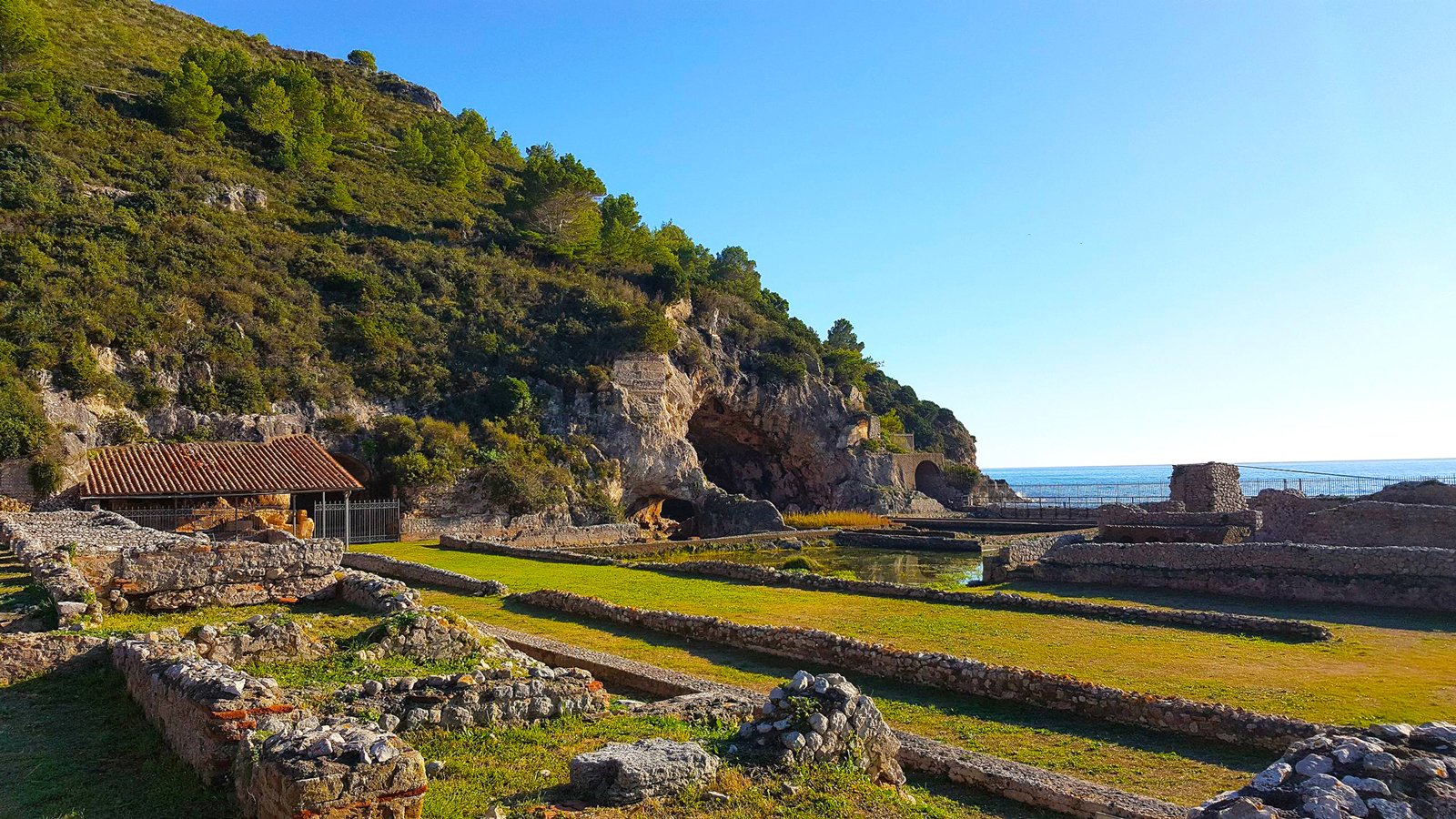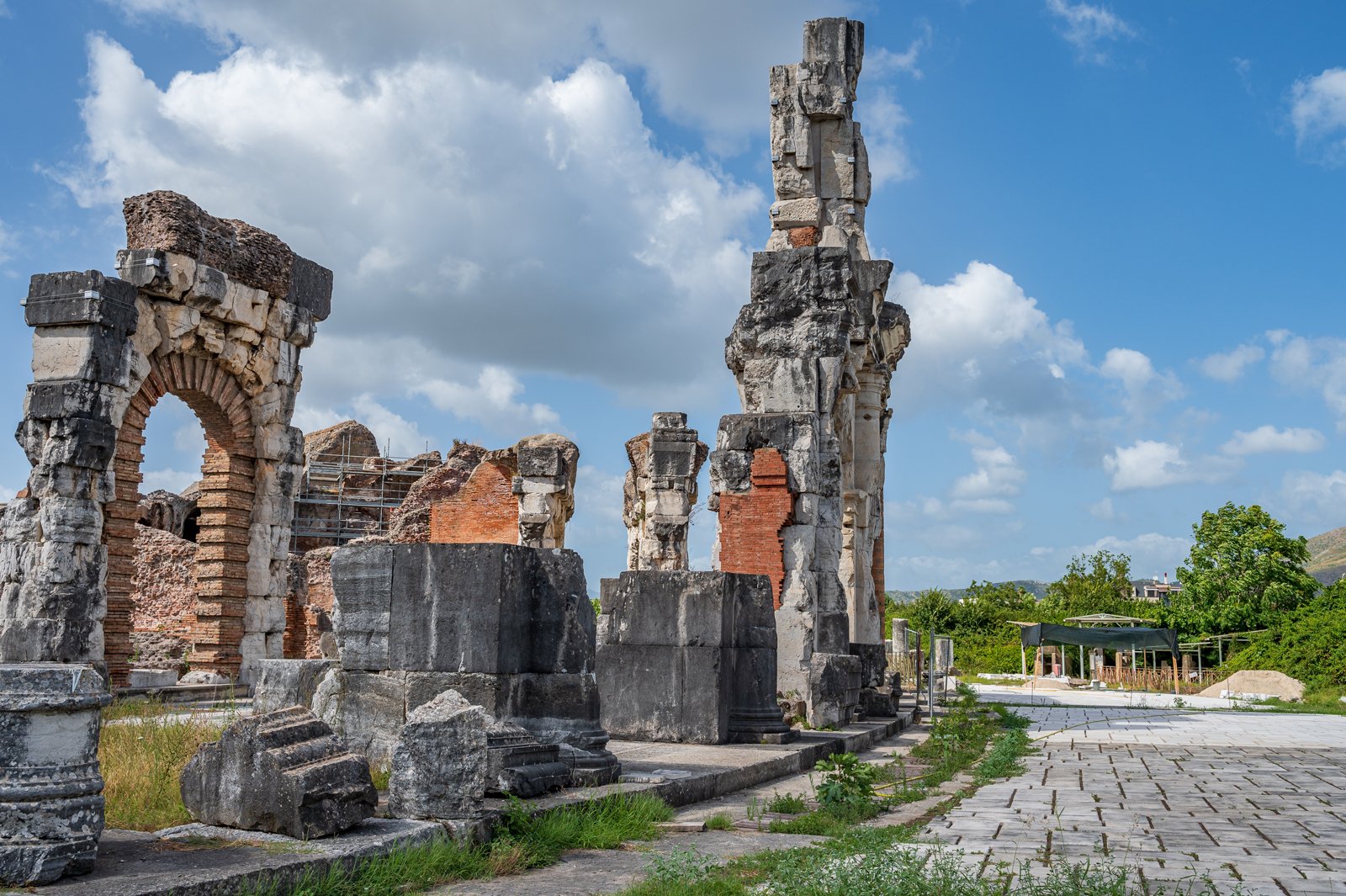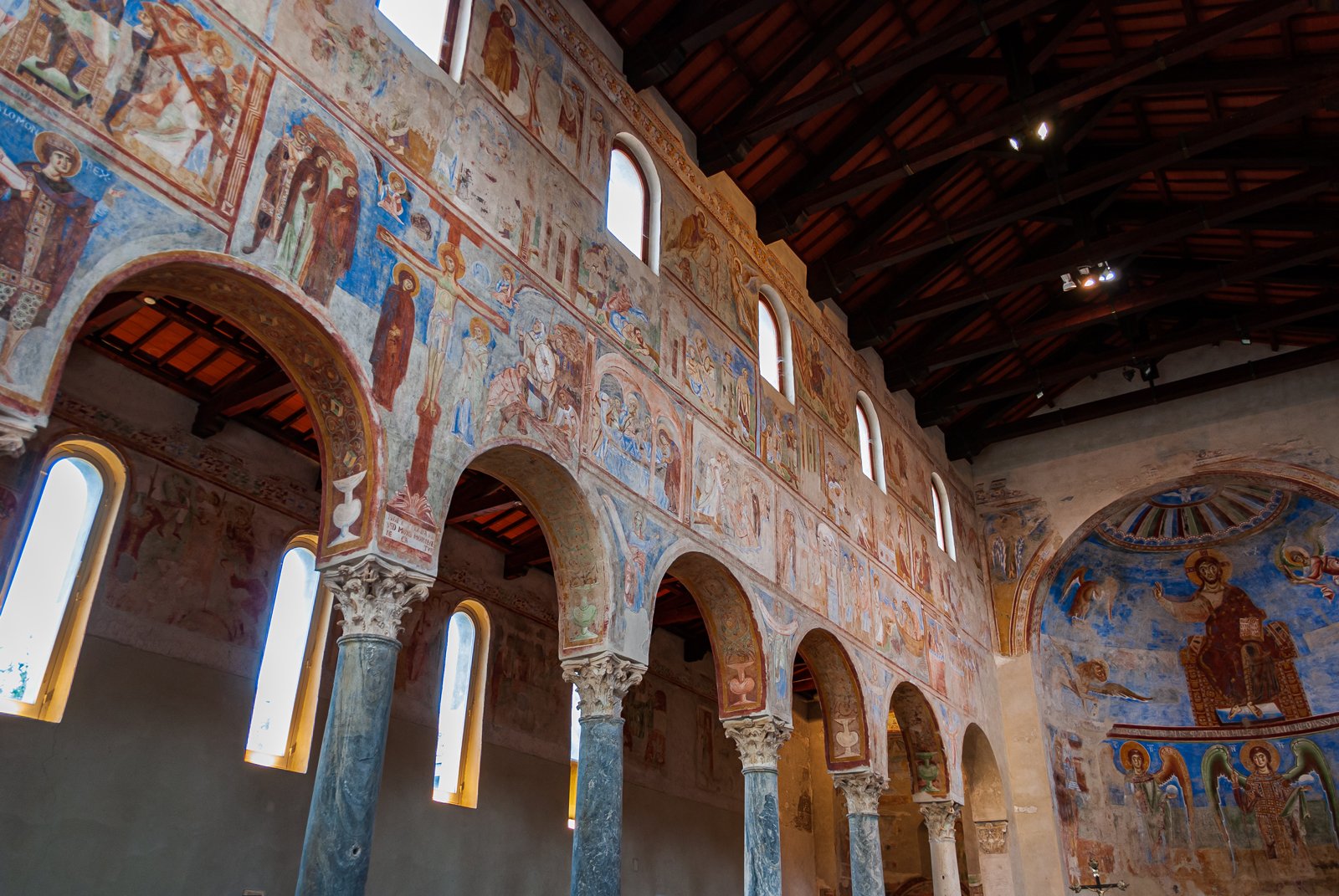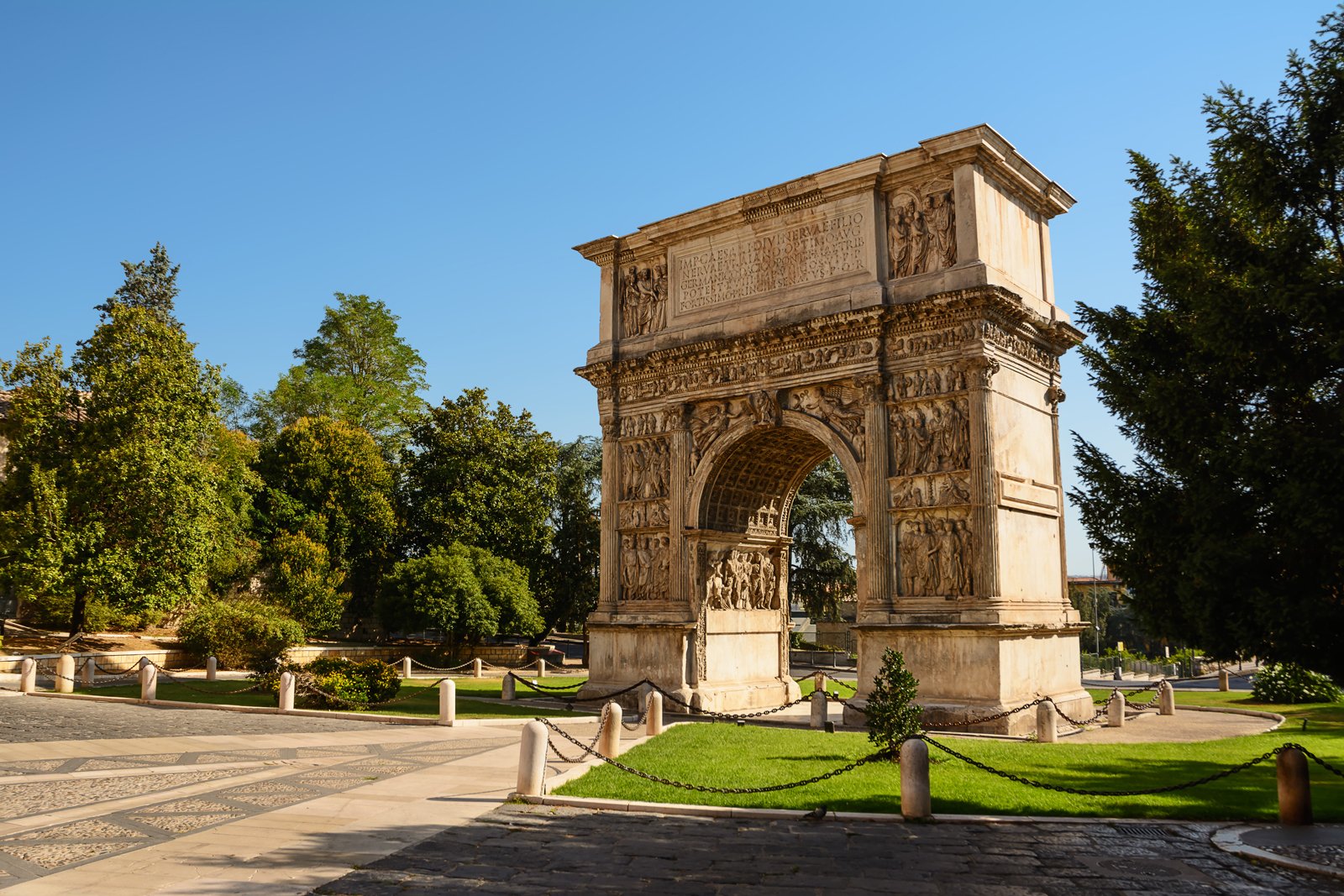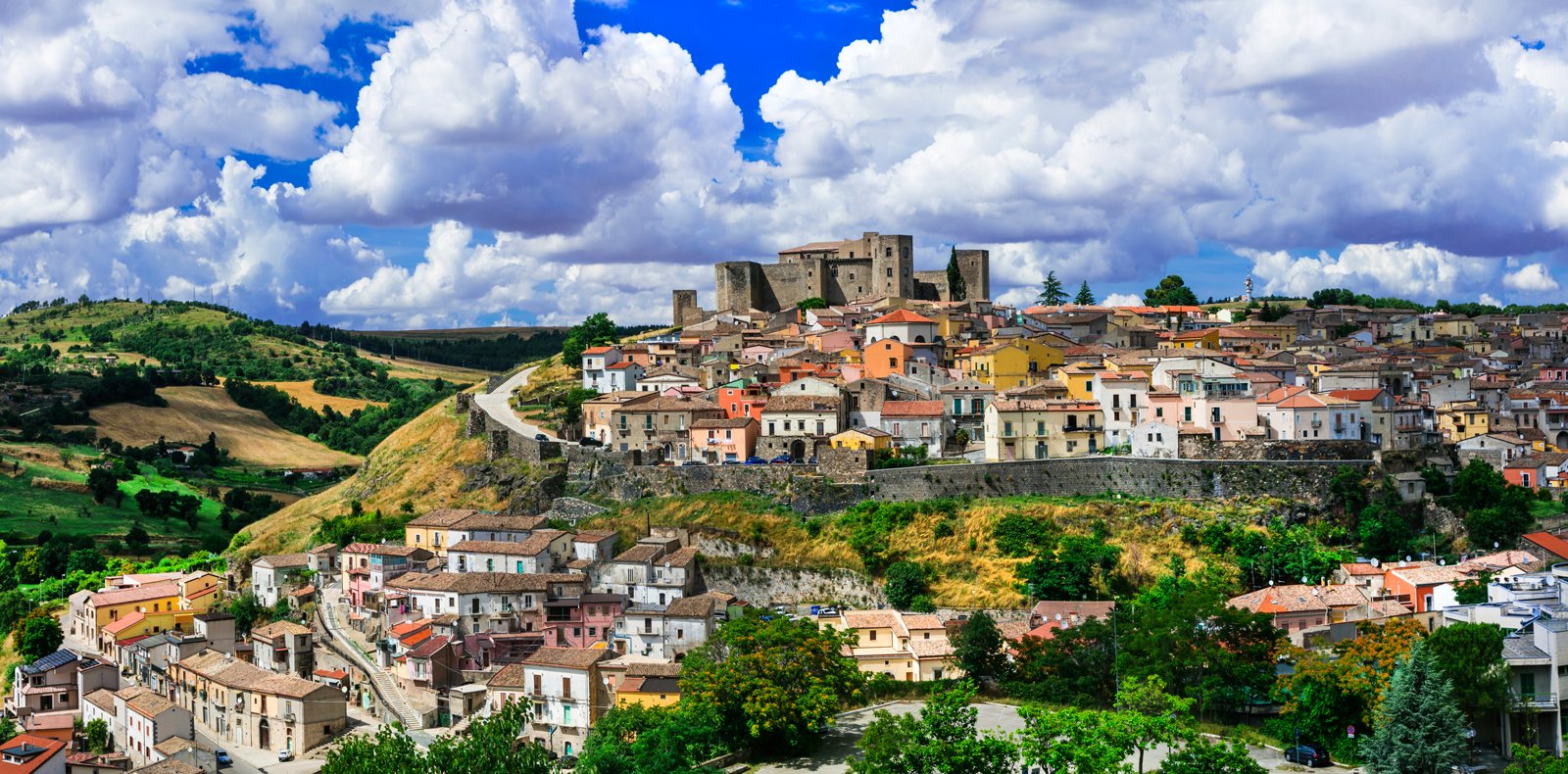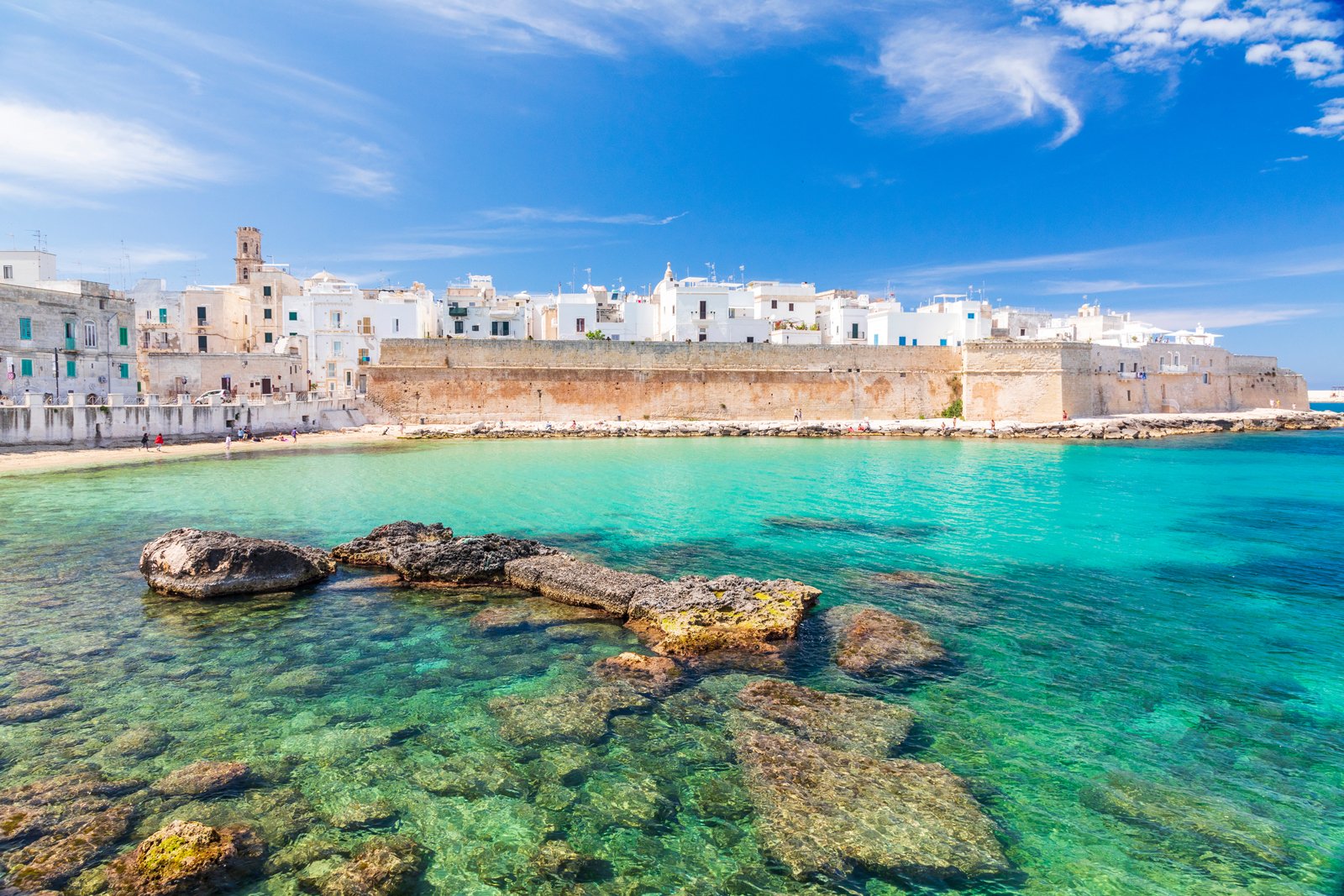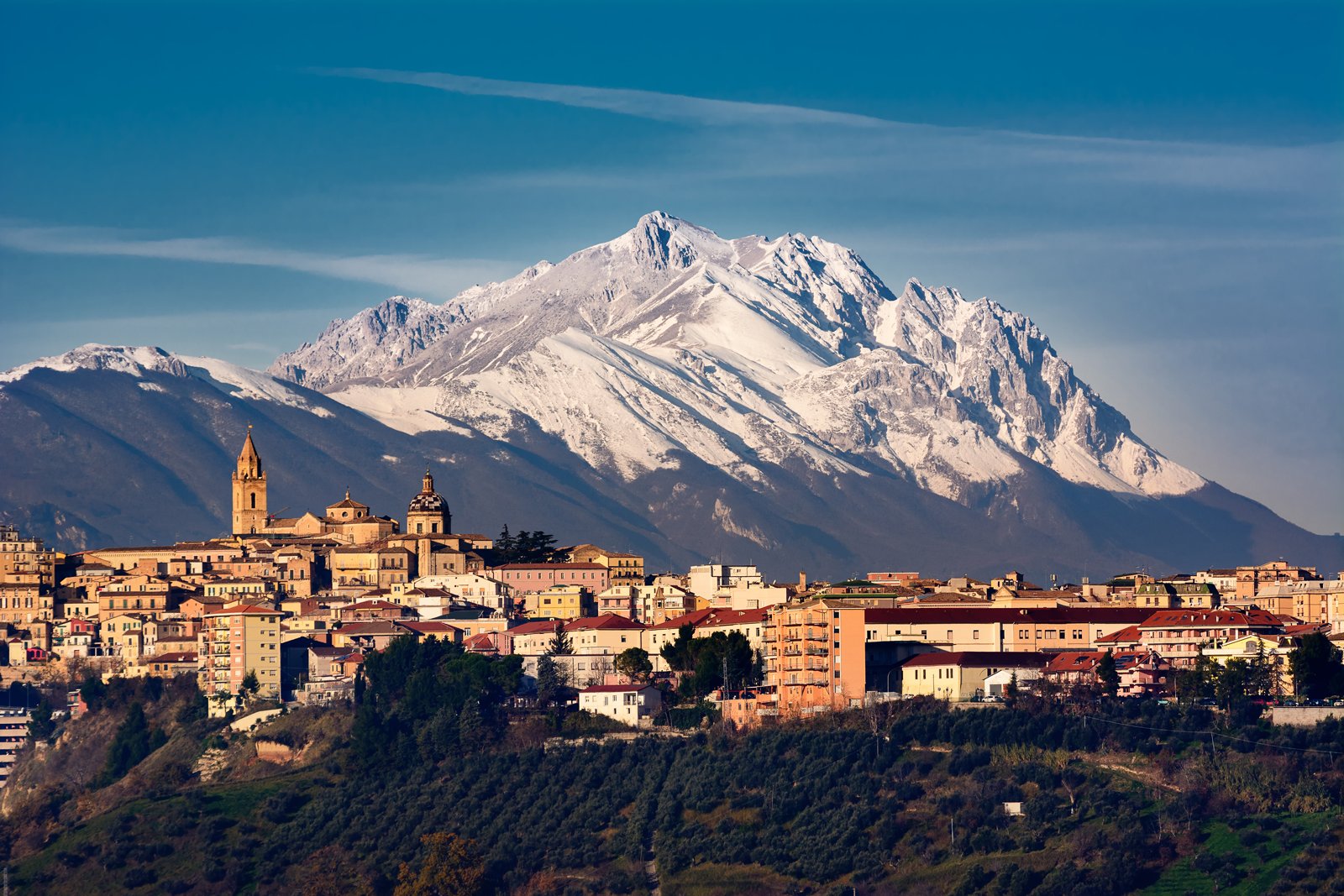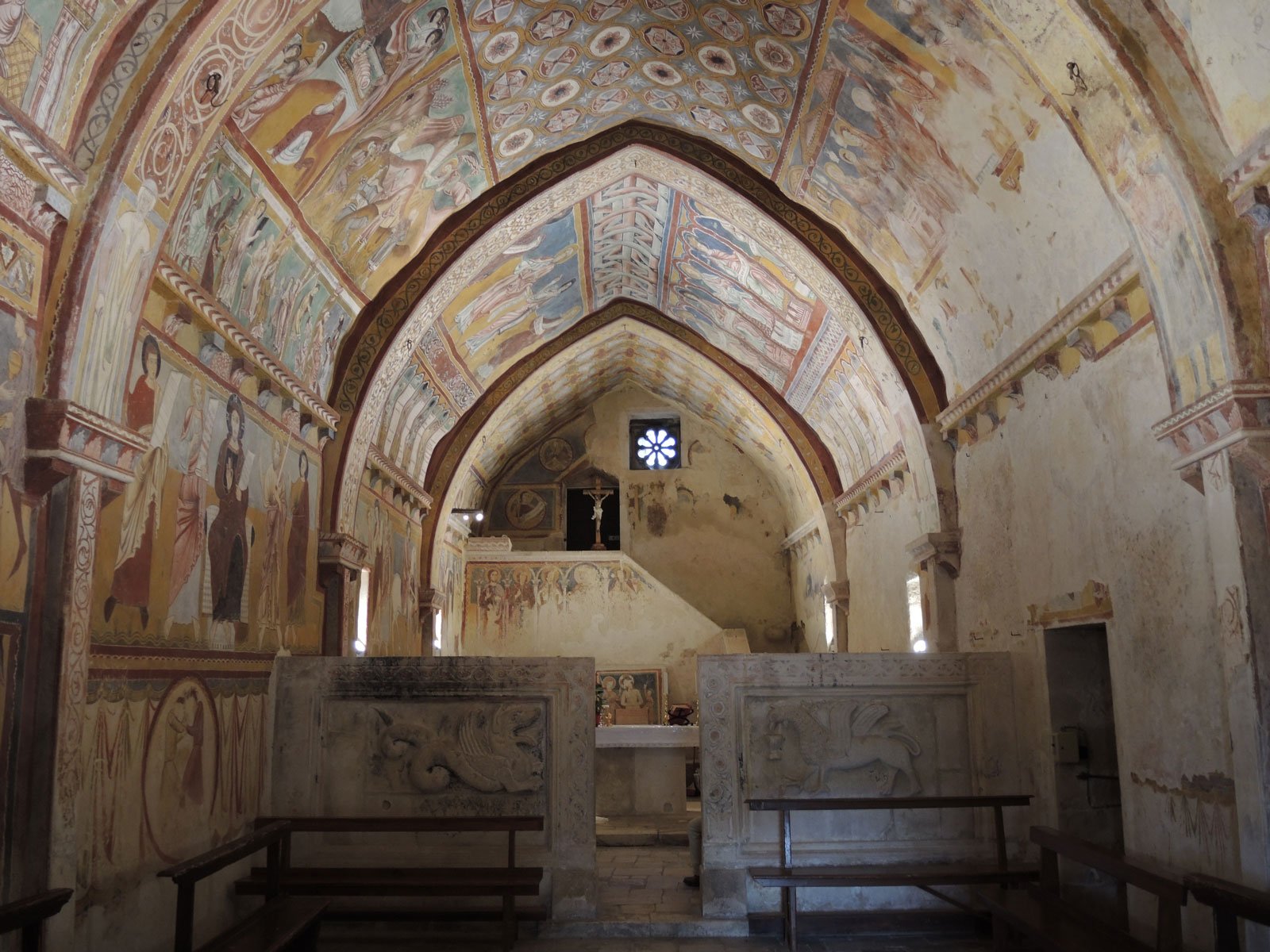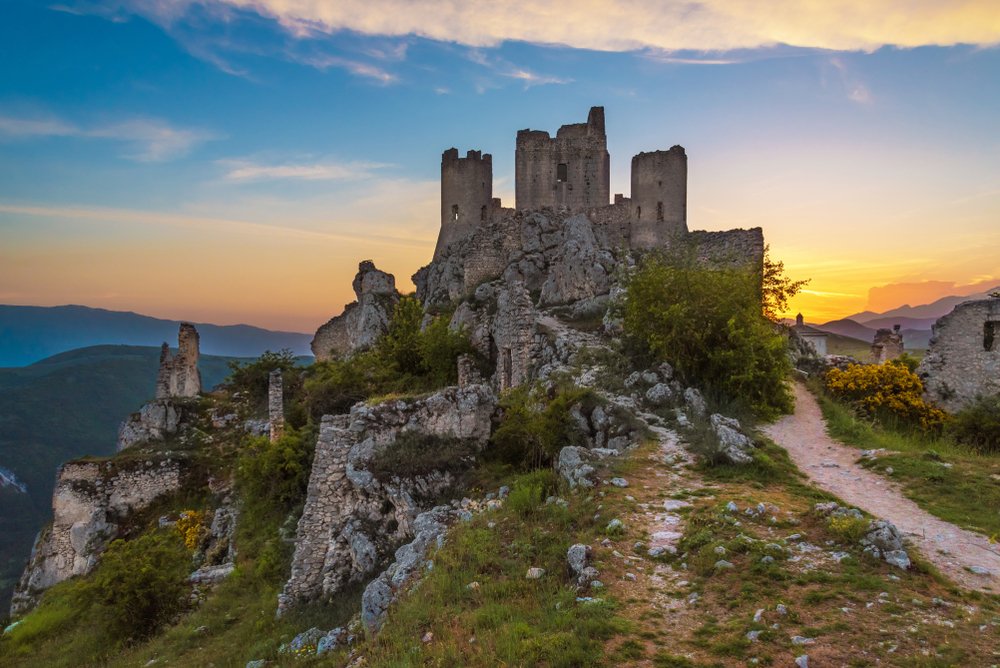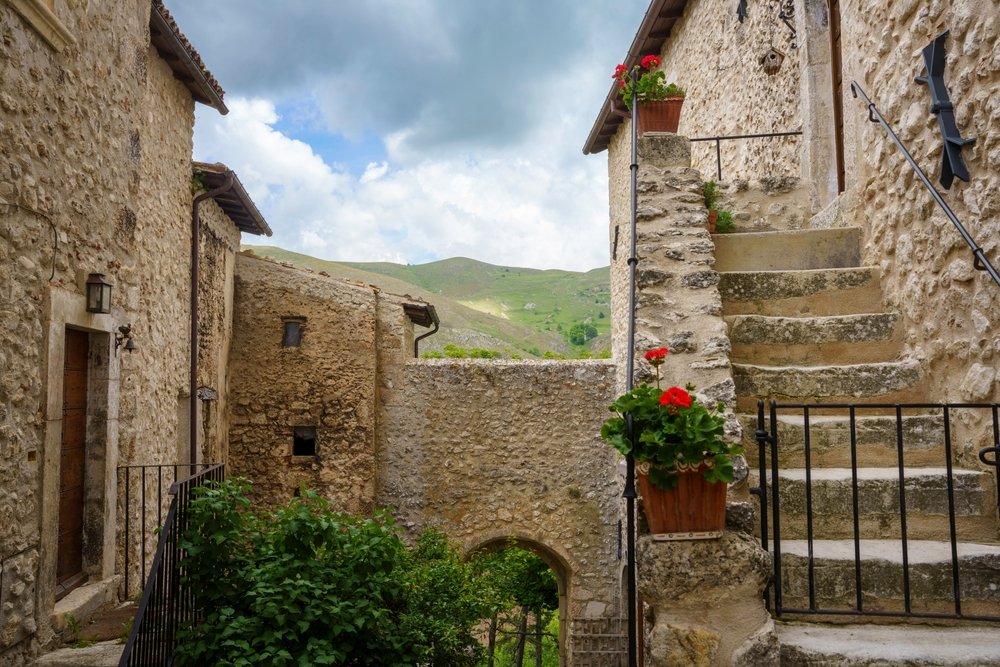
the appian way, bari & abruzzo
05-20 May 2025
Dr kathryn welch
Take the road less travelled in southern Italy, following ancient roads and discovering Roman archaeology, rock churches, medieval frescoes, and Abruzzo’s outstanding scenery
OVERVIEW
Follow the ancient roads of Italy from Rome to Bari and then into the Abruzzo on this new 16-day tour led by historian Dr Kathryn Welch. The tour explores complex social histories, ancient and medieval trade and technology, and their unique legacy in southern Italy.
We begin on the dramatic coast south of Rome, where allusions to ancient figures and mythologies abound, including the legendary home of Circe and Tiberius’s villa at Sperlonga. Here we also walk sections of the Appian Way, encounter the gladiators and mithraea of ancient Capua, and appreciate the sheer romance of Ninfa gardens in their springtime glory.
We continue along the Via Traiana to Benevento in Campania, where we get to know the medieval history of the region. This includes the influential Byzantine and Lombard art and architecture of Benevento, as well as the rock churches, hermits’ grottoes and remote monasteries of Melfi, Venosa and Basilicata’s Vulture region. While in Bari, on the Adriatic, we explore the vibrant legacy of the Normans and their Hohenstaufen descendants – fortresses, cathedrals and historic Jewish neighbourhoods – and appreciate how the unique landscape of the region determines Puglia’s distinctive terroir.
The tour concludes in Abruzzo. One of central Italy’s least known regions, it boasts one of the country’s most beautiful and mountainous landscapes, dotted with churches and oratories that still preserve outstanding medieval fresco cycles, as well as excellent collections of artefacts associated with the Italic tribes who inhabited these mountains before the expansion of Rome.
TOUR LEADER
Dr Kathryn Welch is the ideal expert to lead this journey off the beaten track. A historian and researcher of ancient Rome, Kathryn was a lecturer at the University of Sydney for many years and has travelled extensively in Italy.
Kathryn has led previous successful tours along the Appian Way, and is known as a passionate and engaged communicator.
Details
DATES:
05-20 May 2025
ITINERARY:
Gaeta – 3 nights
Benevento – 2 nights
Monticchio Laghi – 3 nights
Bari – 3 nights
Sulmona – 4 nights
PRICE:
$11,950pp twinshare
SINGLE SUPPLEMENT:
$1,200 for sole use of a double room
DEPOSIT:
$1,500pp at the time of booking
FITNESS:
Above moderate: some steep walks, uneven ground at archaeological sites, coaching days, standing in museums
GROUP SIZE:
Max. 16 places
GETTING THERE:
The tour starts at 9.00am on Monday 05 May 2025, at a meeting place in Rome Fiumicino airport
-
Discover a wealth of less-visited places, from Terracina’s Temple of Jove Anxur to the site of the Battle of Cannae
Encounter fascinating ancient personalities, including Tiberius in Sperlonga, the gladiators of Capua, Horace in Venosa, Hannibal at Cannae and Ovid in Sulmona
Trace the development of Italian medieval art, from Benevento’s eighth-century Lombard Santa Sofia to Abruzzo’s outstanding cycles of frescos
Appreciate the diversity of southern Italy, from Samnites and Oscans to Byzantines, Lombards, Normans, Hohenstaufens and a significant Jewish legacy
Enjoy varied scenery, with dramatic coastal promontories south of Rome, imposing mountains in Abruzzo and Alberobello’s distinctive trulli, as well as the specialised regional cuisine this brings
-
MONDAY 05 MAY – ARRIVAL (L, D)
We assemble this morning at 9.00am at Rome Fiumicino airport and travel south through the Agro Pontino or Pontine Marshes, site of a triumphant fourth-century Roman engineering project. A further modern rehabilitation resulted in a fertile zone, as we discover on a tour of Ninfa, a private garden atmospherically constructed in a ruined medieval village. It is known as the world’s most romantic garden! After lunch, we continue towards the Circeo promontory, named for the mythological sorceress Circe, for a panoramic arrival afterwards at our hotel. There is a welcome dinner this evening. Overnight Gaeta.
TUESDAY 06 MAY – TERRACINA & THE TEMPLE OF JUPITER ANXUR (B)
Terracina is a dramatic site: here the Volscian Hills arrive directly at the sea, with a strategic position over the Pontine Marshes and a harbour that made it a significant colonia maritima for Rome from the fourth century. Terracina only became more important with the construction of the Appian Way. After a talk, we begin with a visit to the Temple of Jupiter Anxur, named for the youthful manifestation of Terracina’s protector. Sitting atop a coastal mountain, it was constructed between the second and first centuries BCE on massive terraces, and its cryptoporticus (or underground passageway) was an important source of inspiration for Italian architects from the Middle Ages onwards. Continuing into Terracina’s centre, we visit the archaeological museum, rich in Roman artefacts, before lunch at leisure. In the afternoon, we continue by coach to Fondi and Itri, for the opportunity to walk on a stretch of the ancient Appian Way. The evening is at leisure. Overnight Gaeta.
WEDNESDAY 07 MAY – TIBERIUS AT SPERLONGA (B)
Today we travel south to ancient Minturnae, settled by the Italic Ausone people. They joined the Second Samnite War of 314 BCE against Rome, but were colonised within centuries to become a waystation on the Appian Way. Ravaged by Lombards, north Africans, Normans and even the Allies during World War II, the ancient site nevertheless conserves impressive Roman remains. We survey the theatre, aqueduct, thermal baths, republican and imperial fora, and amphitheatre, to gain a perspective on Roman infrastructure. Afterwards, we continue to pretty Sperlonga, for lunch at leisure among its whitewashed houses and medieval alleyways. After lunch, we continue to the villa of Tiberius, a first-century coastal residence described by ancient sources, but only uncovered in 1957. While the remains of the grotto, the emperor’s dining room, hint at the villa’s splendour, the monumental sculptures in the museum exemplify the magnificence of the Roman imperial class. Returning to the hotel, the evening is at leisure. Overnight Gaeta.
THURSDAY 08 MAY – CAPUA AND ON TO BENEVENTO (B, D)
We check out this morning and travel first to the site of ancient Capua. Initially an Etruscan settlement, Capua was captured in the fifth century BCE by the Samnites, one of southern Italy’s most significant peoples. Although allied to Rome, Capua defected to Hannibal during the Second Punic War, and Rome’s later punishment of it was terrible. On our tour of the archaeological site, we take in impressive remains such as the amphitheatre, built during the reign of Augustus and still one of the largest surviving ancient examples. A significant training ground for gladiators, including Spartacus, Capua also preserves a decorated mithreum, dedicated to the mystery rites of Mithras. After lunch at leisure, we call in at Sant’Angelo in Formis, an eleventh-century Benedictine abbey church funded by Abbot Desiderius of Monte Cassino. Its well-preserved Byzantine frescoes are some of the most influential to be found in Europe. Continuing to Benevento, we check in to our hotel and enjoy dinner in a local restaurant. Overnight Benevento.
FRIDAY 09 MAY – IN BENEVENTO (B)
Benevento is a strategic centre, situated between Italy’s two coasts, and it grew in prominence after the Via Traiana, a second-century extension of the Appian Way built at Trajan’s personal expense, connected it to coastal Puglia and to Taranto at the “heel” of the Italian peninsula. As we discover on our walking tour, the Arch of Trajan, designed by Apollodorus of Damascus, is a reminder of Benevento’s ancient importance, with sculpted reliefs recounting the glory of Trajan’s life. By the sixth century, Benevento had become the capital of a Lombard duchy, and its early churches, such as World Heritage-listed Santa Sofia, show how these foreign dukes used Christian iconography and architecture to broadcast their power. After visiting the Museo del Sannio in Santa Sofia’s cloister, with thousands of artefacts documenting the Samnite, Roman and Lombard periods of Benevento’s history, there is time for lunch at leisure. The afternoon is also at leisure, with the option to visit Hortus Conclusus, an open-air sculpture park in the centre of Benevento that is the brainchild of Mimmo Paladino. Paladino trained here, and while he is less known outside of Italy, he is one of the most important artists of the Transavanguardia movement. The evening is at leisure after a talk. Overnight Benevento.
SATURDAY 10 MAY – FORTRESSES & CHURCHES IN THE ROCKS (B, D)
Today we check out and travel into Basilicata. A vibrant area in Antiquity – home to Italic, Greek and Roman communities – it was also an important cultural melting pot in the Middle Ages, conquered in turn by Byzantines, Normans, the Aragonese and Spanish. The latter, absentee landlords of an important agricultural region, inaugurated centuries of neglect that have only been addressed since the twentieth century. Consequently, this region is still one of Italy’s lesser known, but as we will see, it preserves an impressive legacy. Our first taste of this is at Melfi, a hilltop fortress town at the base of Mount Vulture that became a strategic. borderlands during centuries of struggle between Byzantines and Lombards. In the eleventh century it was handed to the Hauteville family, adventurers and warriors from Normandy who eventually ruled southern Italy and Sicily as the Norman Kingdom of Sicily. The castle of Melfi is an excellent example of Norman military architecture, while its archaeological museum focuses on the artefacts of the ancient people who inhabited the Vulture. Just outside Melfi, at the rock church of Santa Margherita, we admire exceptionally well-preserved and colourful thirteenth-century frescoes that are a reminder of the many hermitages that dotted the tufa rock outcrops in this area. Continuing to our hotel, a peaceful, family-run establishment located alongside the volcanic lakes and nature reserves of Monticchio, we enjoy dinner together. Overnight Monticchio Laghi.
SUNDAY 11 MAY – IMPERIAL VENOSA (B, D)
Today we visit nearby Venosa, known in Antiquity as Venusia or the city of Venus. The Appian Way was extended to run through here in the second century BCE. In 1041 the town was assigned to Drogo of Hauteville, and the later Sicilian Norman, Holy Roman Emperor Frederick II, built a castle here to house his kingdom’s treasury. We commence our visit at the archaeological park of Venosa, located at the site of the unfinished Abbey of Santissima Trinità. Rebuilt in the eleventh century during the Norman period, it is located over an imperial Roman building; in some places, the mosaic floors of what was perhaps a Roman domus can still be seen. Five members of the Hauteville family were interred here: William Iron Arm, his brothers Drogo and Umfredo, and their powerful half-brothers Robert Guiscard (“the crafty”) and William. Continuing into the centre of town for lunch at leisure, we stop to pay our respects at the so-called House of Horace: the Roman lyric poet was born in Venosa in 65 BCE. After lunch, we continue to the Castello Aragonese, which houses an archaeological museum of Roman antiquities. Returning to our hotel in the afternoon, there is a talk before dinner. Overnight Monticchio Laghi.
MONDAY 12 MAY – THE VULTURE (B, L, D)
We spend today uncovering the delights of Basilicata’s Vulture, a sweeping landscape of mountains and plains resulting from ancient volcanic action. The fertile soil and protected slopes have long been used for the cultivation of grapes and olives, and Italians also know the Vulture as a source of high-quality mineral water. Small volcanic lakes are surrounded by wooded nature reserves, inhabited since the Middle Ages by monastic communities. We visit the Benedictine Abbey of San Michele, founded in the tenth century near ancient grottoes overlooking the lake of Monticchio Piccolo. Afterwards, we continue to a nearby winery for lunch and an introduction to Aglianico del Vulture, the only wine in Basilicata to bear Italy’s highest appellation of DOCG (Denominazione di Origine Controllata e Garantita). Italian wine connoisseurs regard it as one of the country’s best reds. Tonight there is a light dinner in our hotel. Overnight Monticchio Laghi.
TUESDAY 13 MAY – THE BATTLE OF CANNAE (B, D)
Today we check out and continue our journey to the Adriatic, leaving the Basilicata region for Puglia as we stop in the town of Canosa. Located atop a soft limestone mountain, Canosa’s site allowed for materials to be easily excavated by hand for use in the ancient ceramics industry. It also led to the creation of catacombs and underground chambers, or hypogeums, used for funerary rituals for thousands of years. We have a guided tour of selected hypogeums before time at leisure for lunch. Continuing to Bari, we stop at the nearby site of the Battle of Cannae, one of the ancient world’s most celebrated military engagements. On 02 August 216 BCE, the Carthaginians and their allies, led by Hannibal, all but annihilated a larger Roman army. The Roman defeat has been compared in scale to British deaths on the first day of the 1916 Somme offensive. After checking into our hotel, there is dinner in a local restaurant. Overnight Bari.
WEDNESDAY 14 MAY – IN BARI (B)
As we discover on this morning’s guided walking tour, Bari is a vibrant city with a layered and diverse history. Its coastal location at the “heel” of the Italian peninsula guaranteed it an early maritime prominence, and some of its earliest artefacts show a strong influence from Greece. A Roman colony from the third century BCE, Bari was where the Via Traiana met the Adriatic coastal road, and it remained an important port into the Middle Ages. Venetians and Byzantines traded enslaved Balkan people (“Slavs”) with the Arabs here, and in the ninth century the city was even an Arabic emirate for 20 years. In the eleventh century, it became part of the Norman domain. We survey the vestiges of these diverse communities at the Castello Svevo, basilica of San Nicola and in the archaeological museum of Santa Scolastica. The afternoon is at leisure, with the option to join a gastronomic walking tour of Bari Vecchia. The neighbourhood is still known for the simple pasta (usually orecchiette or “little ears”) expertly made by local women at trestle tables outside in the whitewashed streets. Tonight is at leisure. Overnight Bari.
THURSDAY 15 MAY – TRULLI & THE ADRIATIC (B, L)
Much of southern Italy’s unique customs have come down to us today in a remarkable state of preservation, from a medieval dialect of Albanian spoken by descendants of fourteenth-century refugees to unique ways of making bread and a diet that still traces its origins to the colonists of Magna Grecia. Today we travel to Alberobello, characterised by the more than 1,500 distinctive conical structures that dot this village and the surrounding region. Trulli, dry stone huts with roofs constructed out of limestone slabs, now have World Heritage status, and their construction methods and adaptations to the environment – for example, to enable rainwater collection – have set them apart for at least 1,000 years. After our guided tour, we continue to an Apulian agricultural estate for lunch. The masseria, the enclave of buildings, storehouses and barns that characterises southern Italian farms, is another distinctive product of the region. These smallholdings, with crops of olive, wheat and vegetables of all kinds, are renowned for the quality of their produce and of the simple but satisfying cuisine that is prepared from it. After enjoying lunch together, we continue to a coastal town for an afternoon gelato and stroll alongside turquoise waters. Returning to Bari, the evening is at leisure. Overnight Bari.
FRIDAY 16 MAY – INTO THE ABRUZZO (B, D)
We check out today and travel north, calling in at Trani. This small harbour town has a fascinating medieval history, encompassing a Jewish neighbourhood and a Romanesque cathedral boasting one of Italy’s most scenic locations, as we discover on our guided walking tour. Afterwards, we continue into the Abruzzo region, more or less following the route of the ancient transhumance road, or Tratturo Magno, used by shepherds for centuries to take their flocks down from Apennine pastures to sell in southern Italy. Arriving at our base for the next days, Sulmona, we check into our hotel and enjoy dinner together. Overnight Sulmona.
SATURDAY 17 MAY – ANTIQUITIES & THE ABRUZZO IN CHIETI (B)
The landscape of Abruzzo is characterised by mare e monti, sea and mountains, and for centuries its Apennine heights kept the expansion of ancient Rome at bay. By the third century BCE, Roman forces had begun to penetrate into the region, conquering sites that had for millennia been associated with Italic groups such as the Volsci, Sabini, Osci, Samnites and others. Today we explore this history on a visit to Chieti, named according to legend for the mother of Achilles, Thetis. First inhabited at least 850,000 years ago, it is considered one of Italy’s most ancient cities with settlements traced back to 5,000 BCE. The outstanding National Archaeological Museum of Abruzzo contains artefacts from the prehistory of Abruzzo, including the enigmatic ‘Warrior of Capestrano’, as well as significant Roman antiquities. After time for lunch at leisure and to further explore Chieti, we return to Sulmona via a tranquil Romanesque abbey church that still preserves outstanding works of stone and bronze sculpture. The evening is at leisure. Overnight Sulmona.
SUNDAY 18 MAY – THE MIDDLE AGES IN ABRUZZO (B, L)
We begin today with a guided tour of Sulmona, famous as the birthplace of Ovid, as well as its association with Holy Roman Emperor Frederick II and, latterly, confetti or coloured sugar almonds. Afterwards, we travel to the pretty village of Pescocostanzo, one of Italy’s borghi più belli or most beautiful villages, and then on to panoramic Pacentro. This small town is in an excellent defensive position at the end of the valley in which Sulmona is also located, and the local lords of the Caldora family built a fortress here to defend the nearby mountain pass. After lunch in an excellent local restaurant, we tour the town before returning to Sulmona. The evening is at leisure. Overnight Sulmona.
MONDAY 19 MAY – FRESCOES & FORTRESSES (B, L, D)
Today we continue our exploration of the remarkable legacy of art and architecture that the sheep industry and trade brought to Abruzzo in the Middle Ages. We begin with a visit to the Rocca di Calascio. Badly damaged by a fifteenth-century earthquake, this prominent fortress boasts superlative views over the mountains of the Abruzzo, and is one of the icons of the region. (See note below.) Afterwards, we continue to Santo Stefano di Sessanio. This tiny village – also named one of Italy’s borghi più belli – was suffering from depopulation until its revival thanks to a forward-thinking hospitality project. The abandoned houses of the village have been restored as an albergo diffuso, or “dispersed hotel”, with some converted into restaurants. We enjoy a simple lunch in one of these, before we travel to the so-called Sistine Chapel of Abruzzo. The Oratorio di San Pellegrino, a heritage-listed chapel in the small village of Bominaco, is entirely covered in thirteenth-century frescoes. Of an astounding quality, the stories draw on artistic influences from near and far, an indication of how connected such seemingly remote places could be. Returning to Sulmona, there is time to pack before our farewell dinner. Overnight Sulmona.
NB: good fitness and sturdy shoes are needed for the 800m walk to the Rocca di Calascio fortress, which is steep in parts. It will not be possible in case of inclement weather.
TUESDAY 20 MAY – DEPARTURE (B)
We check out this morning and travel to Rome Fiumicino airport. Tour arrangements conclude upon arrival at the airport, and we suggest that you book onward flights no earlier than 3.00pm. For further travel within Italy, there are regular departures from the Fiumicino airport station to major railway hubs, such as Rome Termini and Rome Tiburtina. Our partners at Mary Rossi Travel will be pleased to assist with any travel arrangements, including comprehensive travel insurance.
-
Hotel Mirasole 4* Gaeta, 3 nights
https://hotelmirasole.com/en/home-en/
Hotel Villa Traiano 4* Benevento, 2 nights
https://www.villatraiano.com/en/the-hotel/
Borgo Villa Maria 4* Monticchio Laghi, 3 nights
https://www.borgovillamaria.com/english/
Hotel Excelsior 4* Bari, 3 nights
https://excelsiorbari.it (Italian only)
Hotel Rojan 4* Sulmona, 4 nights
https://www.hotelrojan.it (Italian only)
NB: we have selected comfortable 4* hotels for this itinerary, including an agriturismo-style hotel in the lakes district of the Vulture. Keep in mind that accommodation in less-visited Italian regions tends to be simple, with most establishments family owned and operated.
Hotels of a similar standard may be substituted.
-
15 nights’ accommodation at 4* regional hotels
All breakfasts and 13 lunches or dinners
All ground transport, guided tours and entrance fees to sites as mentioned in the itinerary, and tipping
Expertise of and commentary by an Australia tour leader throughout, including talks in the hotel
Assistance of an Italian-speaking tour manager
-
A $1,500pp deposit is required at the time of booking to hold your place on tour.
We will invoice you for final payment for the tour, due on 19 February 2025.
-
When you book on one of tours, we ask you to accept our terms and conditions. You can read our terms and conditions here.
BOOK YOUR PLACE
A deposit of $1,500 is required at the time of booking to hold your place on this tour
NEED TIME TO CONFIRM YOUR PLANS?
You can hold a place with no obligation for 7 days while you check your other arrangements
Questions?
Get in touch with us by telephone or email:




